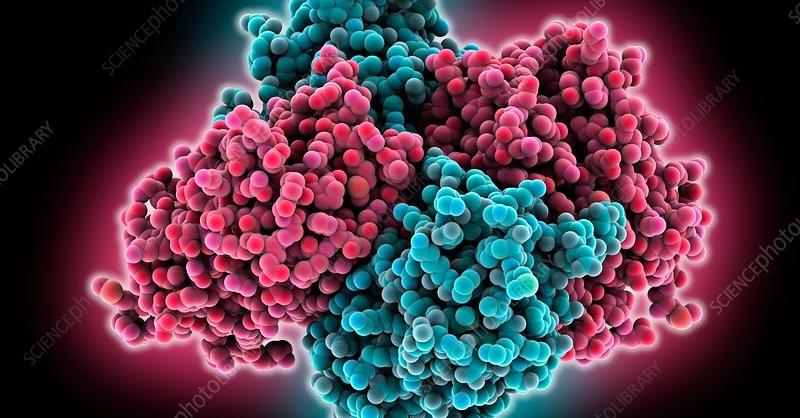Are you curious to know what is conjugated protein? You have come to the right place as I am going to tell you everything about conjugated protein in a very simple explanation. Without further discussion let’s begin to know what is conjugated protein?
Proteins are essential biomolecules that serve as the building blocks of life. They are involved in various vital functions within the human body, including catalyzing biochemical reactions, transporting molecules, and providing structural support. Among the diverse range of proteins, there exists a category known as conjugated proteins. In this blog, we will delve into what conjugated proteins are, their structure, and their crucial roles in biological systems.
What Is Conjugated Protein?
Conjugated proteins, also referred to as compound proteins, are a subclass of proteins that differ from simple proteins in that they contain non-protein components called prosthetic groups. These prosthetic groups are tightly and covalently bound to the protein’s polypeptide chain, forming a complex structure with unique functions. The prosthetic groups in conjugated proteins can be organic or inorganic molecules, such as lipids, carbohydrates, metal ions, or other complex organic compounds.
Key Features Of Conjugated Proteins
- Prosthetic Groups: The defining characteristic of conjugated proteins is the presence of prosthetic groups. These groups are essential for the protein’s overall function and give it its unique properties.
- Diverse Functions: Conjugated proteins have diverse biological functions, depending on the nature of their prosthetic groups. Some common functions include carrying out enzymatic reactions, transporting molecules, and serving as receptors.
- Complex Structure: The combination of the polypeptide chain and the prosthetic group(s) results in a complex three-dimensional structure. This structure is critical for the protein’s stability and functionality.
Types Of Conjugated Proteins
Conjugated proteins can be categorized into several types based on the nature of their prosthetic groups:
- Glycoproteins: These proteins contain carbohydrate groups covalently bonded to the polypeptide chain. They are involved in various biological processes, including cell signaling, adhesion, and immune response.
- Lipoproteins: Lipoproteins combine proteins with lipids (fats). They play a crucial role in transporting lipids through the bloodstream and are essential for lipid metabolism.
- Metalloproteins: Metalloproteins contain metal ions as prosthetic groups. Hemoglobin, for example, is a metalloprotein with iron ions at its core, responsible for oxygen transport in red blood cells.
- Phosphoproteins: Phosphoproteins have phosphate groups attached to the protein chain. They are vital for cell signaling, particularly in processes like phosphorylation and dephosphorylation.
- Hemoproteins: Hemoproteins have a prosthetic group called heme, which contains an iron atom. Hemoglobin and myoglobin are examples of hemoproteins involved in oxygen transport and storage.
Significance Of Conjugated Proteins
- Enzymatic Reactions: Many conjugated proteins, particularly enzymes, play a central role in catalyzing biochemical reactions. For instance, cytochrome P450 enzymes, which are hemoproteins, are involved in drug metabolism.
- Transport: Conjugated proteins are essential for transporting molecules within the body. Hemoglobin transports oxygen, while lipoproteins transport lipids, including cholesterol, throughout the bloodstream.
- Structural Support: Some conjugated proteins, such as collagen (a glycoprotein), provide structural support to tissues like skin, bones, and cartilage.
- Cell Signaling: Glycoproteins, with their carbohydrate moieties, are involved in cell signaling processes, including cell adhesion, recognition, and immune responses.
Conclusion
Conjugated proteins are remarkable biomolecules that exemplify the complexity and versatility of proteins in living organisms. Their unique structures, formed by the integration of prosthetic groups, enable them to perform a wide array of functions vital to life and health. From catalyzing essential reactions to facilitating molecular transport and participating in structural integrity, conjugated proteins are indispensable components of the intricate machinery of the human body. Their study continues to reveal new insights into the workings of biological systems, deepening our understanding of life itself.
FAQ
What Is Meant By Conjugated Protein?
A conjugated protein is defined as a protein to which another chemical group (e.g., carbohydrate) is attached by either covalent bonding or other interactions (Wong, 1991).
What Is Conjugate Proteins And Give An Example?
Some examples of conjugated proteins are lipoproteins, glycoproteins, Nucleoproteins, phosphoproteins, hemoproteins, flavoproteins, metalloproteins, phytochromes, cytochromes, opsins, and chromoproteins. Hemoglobin contains the prosthetic group known as heme.
Why Are Proteins Called Conjugated?
classification. …of proteins has been called conjugated proteins, because they are complex molecules of protein consisting of protein and nonprotein moieties. The nonprotein portion is called the prosthetic group.
What Is Conjugated And Unconjugated Protein?
Summary – Simple Protein vs Conjugated Protein
The key difference between simple protein and conjugated protein is that simple proteins are made of amino acids bound together to form a large molecule, whereas conjugated proteins are complex molecules containing simple proteins and non-protein components.
I Have Covered All The Following Queries And Topics In The Above Article
What Is A Conjugated Protein
What Is A Conjugated Protein A Level Biology
What Is Conjugated Protein
What are conjugated proteins?
